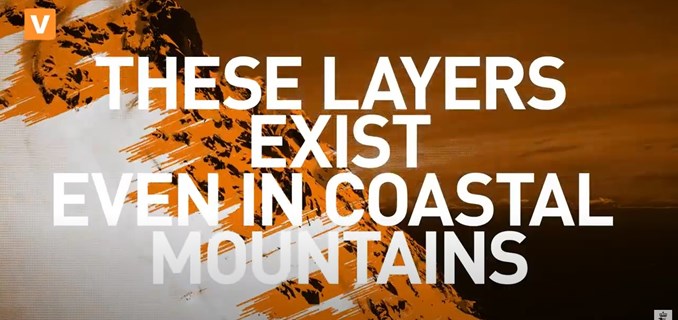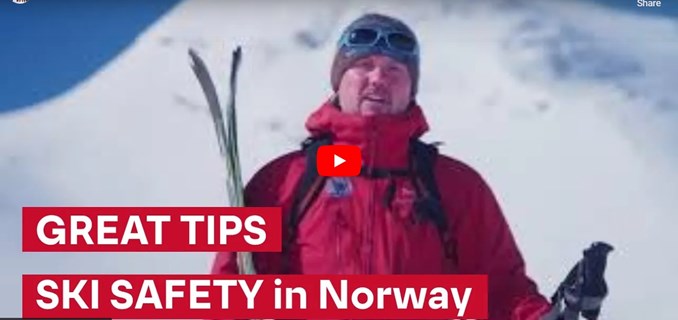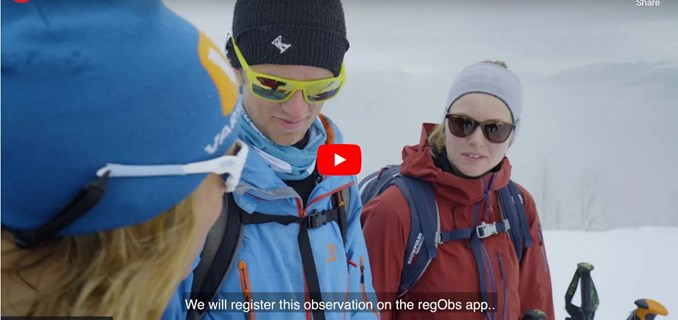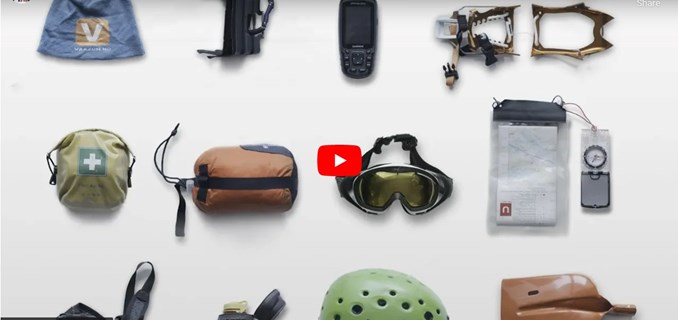Ski touring in Norway
Welcome to our beautiful mountains. Skitouring in Norway is a fantastic experience. With close proximity to the sea, our snow and weather conditions may differ from what you are custom to. We have therefore collected information which can help you stay safe and get the best out of your stay in Norway.
Avalanche forecast and maps in a free app.
If you are ski touring in the Norwegian mountains, you need to download the Varsom app from App Store or Google Play.
In the app you will find avalanche forecasts in addition to terrain maps and topographic maps for offline use. Make sure to download your maps before starting your trip, as cell phone reception in the mountains may be poor or non-existent.
Daily online guidemeetings in march and april.
Are you a IFMGA guide visiting Lyngen? Do you want updated reports and tips about todays conditions – for a better and safer ski summit tour? Join the daily online guide-meetings with local experts!
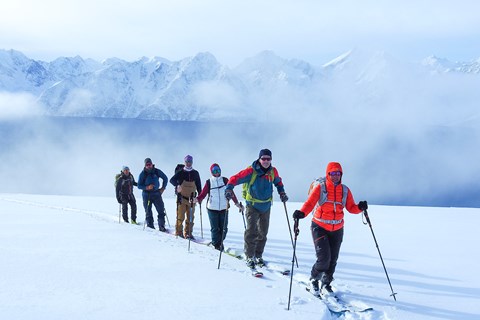
To help facilitate good decision making and a good experience for all visitors, the region for the first time offers daily meetings where guides can get the latest weather, snowpack and avalanche info. In the meeting you can discuss routes, conditions and share info with local experts in Lyngen.
We hope to establish a sharing culture and a friendly atmosphere where all certified guides can participate.
Join the meeting at 1830 every day HERE (open for IFMGA guides)!
Read the report from todays meeting HERE (open for everyone)!
Avalanche warning service
Norwegian Avalanche Warning Service (NAWS) publishes regional avalanche warnings daily from the 1st of Dec to the 31st of May. Our forecasting regions are quite large compared to those of central Europe. As always, you will need to assess the local conditions and weather to get a more precise situation awareness. You can find the avalanche forecast on Varsom.no or in the Varsom-app. Videos explaining the use of the regional avalanche forecast in French, Italian, and German can be found here LINK.
While in Norway, you need to pay special attention to these conditions when skitouring in Norway:
Weather forecast
The main source for weather forecasts in Norway is yr.no. To see the weather forecast for the area of your interest, you can press the link “wheather from Yr” in the Varsom app, or you can search by location, coordinates or click a point on the map on yr.no. Yr.no can also be downloaded as an app.
Norwegian Weather conditions
Generally speaking, there is a lot of weather in Norway! Due to the closeness to the sea, weather often changes quickly and can catch you by surprise, changing snow and avalanche conditions, reducing visibility and your ability to navigate safely. Please remember to balance your terrain choice with current conditions and your group's ability. We advise you to be flexible and have alternative plans, also non skiing ones.
We want to highlight a few weather-related things that might be unfamiliar to you:
Strong wind
Strong winds create hard wind slabs. Hard slabs mean fewer warning signs in situations with persistent weak layers in the snowpack. Long periods with persistent weak layers are common. Wind creates large and numerous cornices, mostly located on east-facing slopes off rounded or plateau-shaped peaks. Blowing snow is a common cause of avalanche danger, and it is easy to underestimate how quickly this problem can become severe.
Persistent weak layers all through the season.
Many visitors are fooled by persistent weak layers creating dangerous conditions in coastal areas and south-facing terrain even in the spring. Check if persistent weak layers are a avalanche problem in the forecast.
Polar low pressure
Norway (58°–71°N) and Svalbard (76°–-80°N) have long winters with plenty of snow. Low-pressure systems hit the coastal regions repeatedly, dumping massive amounts of snow and changing the snowpack rapidly. The interior regions and Svalbard have less snow, and long cold, dry periods. So-called polar lows can be especially nasty and give intense snow showers and complex wind patterns.
Maps
If you are ski touring in the Norwegian mountains, you need to download the free Varsom app from App Store or Google Play.
In the app you will find topographic maps and avalanche terrain maps for offline use. Make sure to download your maps before starting your trip, as cell phone reception in the mountains may be poor or non-existent. This is the same app that gives you the avalanche forecasts and field observations. You can use the app to submit your field observations, thereby contributing to improving the avalanche forecast and sharing information with fellow backcountry skiers. To do this, you need to get an NVE account.
Guidebooks
The main source for inspiration and detailed information are the guidebooks from the Norwegian Skiing magazine Friflyt. The broadest selection of guidebooks is in Norwegian. However, several titles are available in English.

